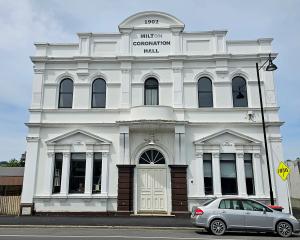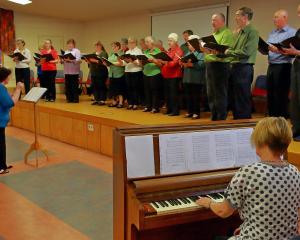Consents are being sought for a floodbank in southern Milton, which officials believe will prevent a repeat of disastrous floods which occurred there twice in the past two years.
The Clutha District Council, which wants to build the floodbank, has lodged applications with the Otago Regional Council for a land use consent, a permit to divert water from the Tokomairiro River and another permit to discharge contaminants during construction of the $900,000
project.
The district council wants to build the floodbank on the north bank of the river to reduce the amount of water flowing through the southern end of Milton during floods.
Because of the "considerable'' public interest in the application, the council has asked the matter to be publicly notified.
Two floods within 18 months caused severe damage to several properties, forcing some owners to spend several weeks away from their homes while repairs were made.
Some owners were given financial help by the council to raise their houses above flood levels.
A report prepared for the council said the proposed floodbank would protect those areas from a one-in-50-year flood event.
During such a flood, the river runs across State Highway 1 and compromises the town's stormwater drainage system, pushing floodwaters into low-lying streets and houses.
"Currently, there are no measures in place to provide defence against flood waters from the Tokomairiro River,'' the report said.
Houses in the Mill and Pope Sts area are most at risk from river flooding. The plan is to build a new floodbank and pump station to divert water away from those low-lying areas.
The floodbank would have a maximum height of 2.5m and measure about 1m wide. Its total "footprint'' is estimated at 3700sqm, with about 3800 cubic metres of soil and rock fill material to be used in building it.
The floodbank itself would start at the northern end of the State Highway 1 bridge, travel in a southeast direction, generally running parallel with the river and finishing near Bruce St at the town's water treatment plant.
The details were finalised after consultation with affected landowners, the report said.
When looking at alternatives to the planned work, the report dismissed ideas like a concrete flood wall and a floodbank on both sides of the river, claiming the proposed earth floodbank was the best practicable option and would have the least visual impact.
In its assessment of environmental effects, the council said there would be long-term positive effects because it would reduce the flooding risk for Milton.
However, one main long-term effect would be the noise from the pump station.
Public submissions close on May 12.














